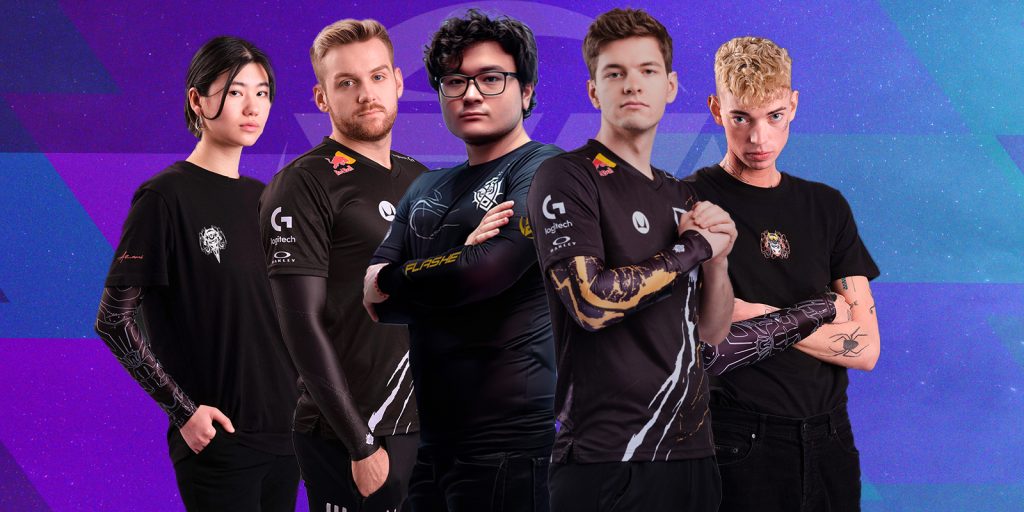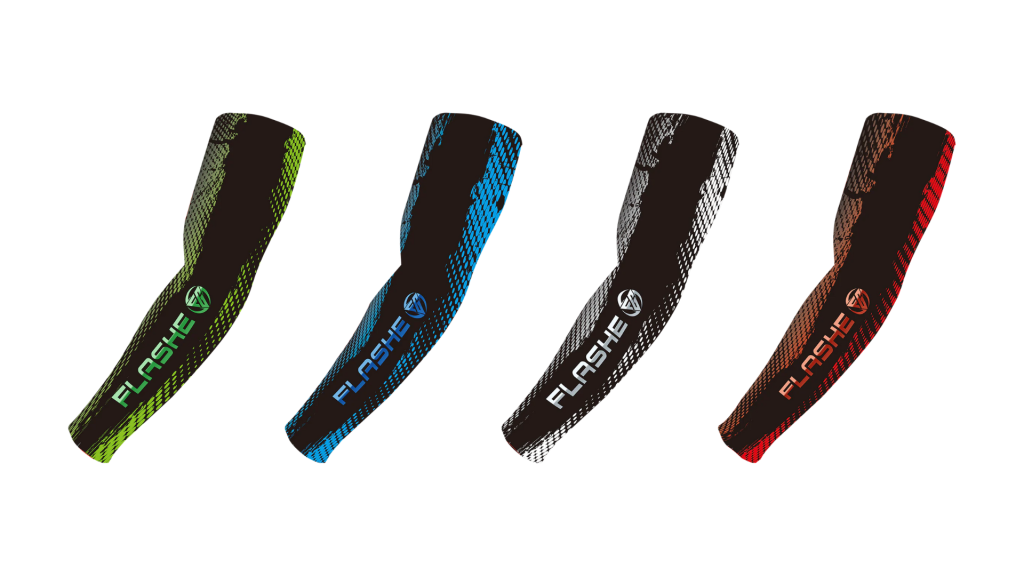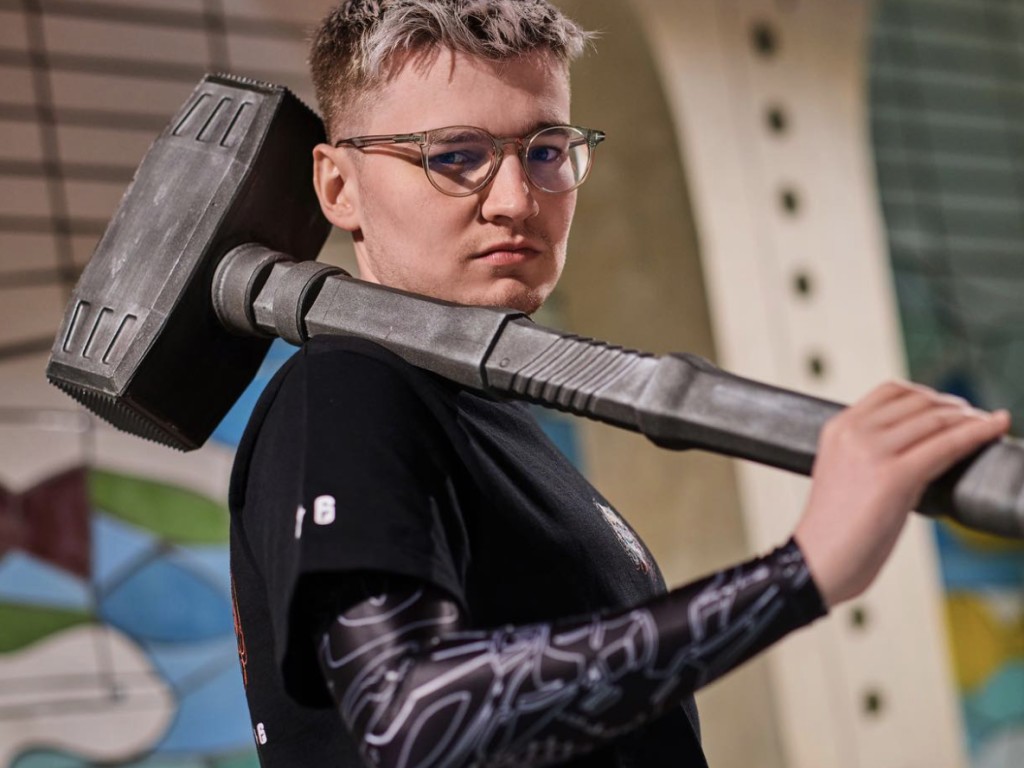
In the world of professional sports, every little improvement matters, regardless of how minuscule it might seem to us, the viewers. In football, athletes regularly swap for boots that are just a couple of grams lighter, golfers use gloves that help them grip the club better and handball players tape fingers together to get a better grip on the ball.
Yet when it comes to esports, there’s few performance-enhancing products available — and little in the way of research, either. Oskar Ödmark, CEO of Flashe Gaming, is steering a company that aims to develop products that help esports players.
Flashe Gaming was created to combat a very specific problem Ödmark had during his semi-professional career as an esports player: friction. Ödmark said that he “always hated” that friction levels are different with different clothing, desks, and mousepads, and aimed to create a product that changes that by making friction the same in every place — a sleeve. Interestingly, Ödmark’s own esports career was cut short due to an injury related to friction.
From a viewer’s perspective, almost every player in every esports tournament uses the same type of equipment: a mouse, mousepad, headset, monitor, and keyboard (or controller). Other than that, there is not much in the way of products that give a subtle edge, other than perhaps hand warmers or compression sleeves. Ödmark thinks the main reasons for the lack of products that help players perform better lies in the fact that esports is a very young industry that still needs to mature.
The development of specialised equipment is a natural follow-on to growth and mainstream acceptance, said Ödmark, and continued on to argue that as esports grows, so will the search for performance-maximising products. These include products outside the ‘must-have’ hardware, such as the sleeves Flashe Gaming makes.
Another reason for the relative dearth of performance products is that identifying needs and evaluating performance metrics relevant to esports athletes is a long and difficult process. Often, it is very hard to find a player that can explain what he or she needs exactly, and how to solve a problem they are experiencing.
Ödmark also noted the fact that creating products requires innovation, investment and technology to create something that actually helps. This is simply not viable for a large number of companies, especially with the current financial climate in the industry, since pursuing something that might help is riskier than core product releases.
In addition, there is the question of effectiveness. When talking about products such as sleeves or wrist rests, players and other buyers might struggle to find research that supports the claims of the companies, leading them to believe that the products are not tested and beneficial. Ödmark agrees and notes that there are far too few studies conducted in this field.

“I believe there is a lot of progress to be made by perhaps fostering partnerships between esports companies and research institutions to prioritise and fund these studies. What we might find in return is that the findings of the studies will probably not only be applicable to esports but also to other relevant fields.
“I think esports has come a long way in the last few years by increasing its visibility and legitimacy as an actual sport, which should inevitably attract more scientific interest and resources. At Flashe, we are very committed to supporting and collaborating on research projects that validate the efficacy of our products through data-driven results.”
Research
While it’s hard to quantify the performance improvement of products such as sleeves, research does show that compression garments can help with circulation and comfort during longer periods of physical activity.
The research on compression garments and products in other sports is plentiful, and numerous players and athletes use them for improved blood flow, including the flow of oxygen towards extremities. In a study review (meta-analysis) published in 2022, authors concluded that compression garments can reduce perceptions of muscle soreness and pain following exercise, and that it is unlikely that these garments negatively affect exercise performance.
Repetitive strain injuries (RSIs), caused by repetitive use of a body part, may be more prevalent amongst esports players, in particular their arms due to thousands of mouse movements every day.
Getting used to a sleeve also reduces the amount of friction for a player — a benefit since they can know exactly what to expect from their arm movements, regardless of the desk. Reducing friction and increasing blood flow just a tiny amount may go a long way when a player is spending most of their time behind a desk and moving their mouse.
Regarding friction, studies have suggested that using a high-friction mousepad, such as the ones used in esports tournaments, may slightly increase the risk of symptoms or disorders in the wrist, which is something that sleeves aim to fix.
The field does need more studies, but the data available now points in the direction that using garments and other gear can assist in both performance and health.
So far, no explicit conclusion has been drawn on the direct help performance garments provide to esports players — but there are also no indications of performance products being a downside to players.

Player testing
Ödmark is very aware of the scepticism audiences might have about products of this particular type and attributes it to past experiences players and fans have had. Ödmark added that there was a surge of gadgets in the industry that offered marginal or no benefits to gamers, which led to them being suspicious of other, new products of this kind.
To combat this, companies such as Flashe need to work closely with players to analyse, test, and provide feedback on the products, he said. This needs to be paired with open communication about the research and development process, so everyone involved understands that the premise is to create something that actually helps, and not just something for customers to waste money on.
Ödmark added: “By actively involving the esports community and some of the best esports players in the world and showcasing real, measurable improvements in player performance, we aim to shift the perception of these products from mere accessories to essential equipment for competitive gaming. In a few years from now, I believe that gaming sleeves will be for an esports player what a golf glove is for a golfer.”

